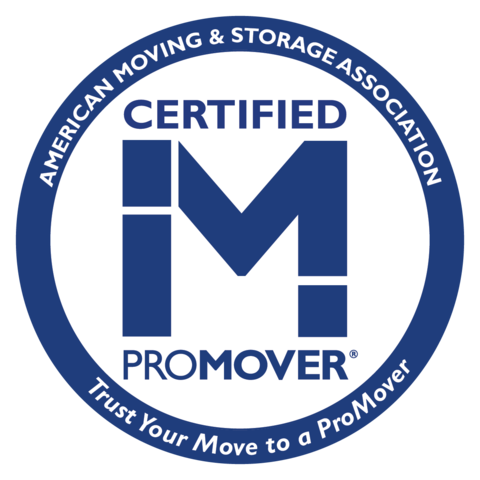METCALF MOVING BLOG
How to Skillfully End a Commercial Lease
Moving your business is a significant transition with unique complexities. One of the most challenging aspects is exiting a commercial lease without unnecessary stress or financial strain. Here’s a step-by-step guide to navigating the process with professionalism and ease.
Review Your Lease Agreement Thoroughly
Start by revisiting the lease agreement. Identify the terms related to lease termination, including notice periods, penalties, and conditions for ending the lease early. Pay close attention to:
- Notice Requirements: Determine how much advance notice you must provide and in what format.
- Early Termination Clauses: Some leases include options for early exit under specific conditions, such as paying a fee or finding a replacement tenant.
- Restoration Requirements: Understand your obligations for restoring the space to its original condition, from removing fixtures to repairing walls and floors.
If anything in the agreement is unclear, consult a legal professional to avoid missteps that could lead to penalties.
Communicate with Your Landlord
Open, honest communication with your landlord is key. Schedule a meeting or call to discuss your plans to exit the lease. Being transparent can foster cooperation and potentially more flexible solutions.
- Propose Alternatives: If you need to exit early, offer to help find a new tenant or negotiate a buyout.
- Clarify Terms: Confirm expectations for the property condition and final inspections.
- Document Agreements: Any agreements made outside the original contract should be documented in writing to avoid misunderstandings.
Plan for Restoration and Repairs
Commercial leases often require tenants to return the space to its original condition. This can include:
- Removing Fixtures: Take down any installed shelving, partitions, or custom equipment.
- Repairing Damage: Patch holes, repaint walls, and fix any damage beyond normal wear and tear.
- Deep Cleaning: Ensure the space is clean and presentable for the next tenant.
Start these tasks early to avoid last-minute rushes that could lead to overlooked details or additional costs.
Manage Utilities and Services
Don’t overlook the administrative side of moving out. Notify utility providers and service companies of your move-out date. This includes:
- Electricity, Gas, and Water: Schedule disconnection or transfer of services.
- Internet and Phone: Cancel or relocate services.
- Mail and Deliveries: Update your business address with relevant contacts and clients.
Also, notify your insurance provider to adjust or cancel your policy for the vacated space.
Conduct a Final Walkthrough
Before handing over the keys, conduct a thorough walkthrough with the landlord. Use a checklist to ensure all requirements have been met and document the space’s condition with photos. This helps prevent disputes over damage or deposits later on.
- Confirm Inspection Points: Verify that all repairs, cleaning, and removals meet lease requirements.
- Address Concerns Promptly: If the landlord identifies issues, resolve them quickly to avoid extended costs or deductions from your security deposit.
Understand Security Deposit Terms
Clarify the process for reclaiming your security deposit. Confirm how and when it will be returned and what deductions, if any, are expected. Having clear communication at this stage can help avoid unnecessary disputes.
Smooth Moves Start with Smart Planning
Exiting a commercial lease doesn’t have to be complicated. With the proper preparation and a professional approach, you can leave your space in good standing and focus on the next chapter of your business journey. Need expert moving assistance for a seamless transition? Contact us today for reliable and efficient moving services that make business relocations hassle-free.
Smart Packing: Clothes, Shoes, and Accessories for Your Move
Preparing for a household move means packing everything from furniture to footwear. Clothes, shoes, and accessories may seem straightforward; efficiently handling them can save time, space, and stress. Here’s what you need to know to pack these essentials smartly and keep them in top condition during the move.
Sort and Declutter First
Before packing anything, sort through your wardrobe. Moving is the perfect opportunity to eliminate excess clothes. Donate, sell, or recycle anything you no longer wear. Be honest about items that you haven’t worn in over a year. Eliminating unnecessary items means the less you must pack, carry, and unpack later.
Create piles for donation, sale, and keeping. Consider organizing a garage sale to lighten your load and make extra cash. For items in good condition that hold sentimental value but aren’t worn, consider storage solutions or asking family if they’d like to keep them.
Use the Right Packing Supplies
Invest in the appropriate packing supplies, such as sturdy boxes, wardrobe boxes for hanging clothes, and vacuum-seal bags for bulkier items. Wardrobe boxes keep clothes on hangers, saving time when unpacking. For shoes, consider individual boxes or wrapping each pair in packing paper to protect against scuffs. Place heavier shoes, like boots, in sturdy containers to avoid crushing lighter pairs.
Organize accessories like belts, scarves, and jewelry in labeled containers or small bags. Use small zippered pouches or pill organizers for jewelry to prevent tangling. Cushion delicate accessories with soft clothing or bubble wrap.
Pack by Category and Season
Group similar items together to simplify unpacking. Pack off-season clothing first, followed by current-season items closer to your move date. For example, if you’re moving in summer, pack winter coats and boots first. Use clear bins for essentials you’ll need immediately upon arrival. Label each box clearly to avoid confusion when settling into your new home.
Keep clothing from the same family member together to avoid sorting confusion later—label bins or boxes with the person’s name and room destination to streamline unpacking.
Protect Delicate Items
Use packing paper or soft clothing to cushion delicate items like jewelry or accessories with fragile details. Place heavier clothing at the bottom of boxes and lighter items on top. For shoes, stuff them with socks or paper to maintain their shape, and place them heel to toe to maximize space. Wrap heels or delicate shoes in bubble wrap for added protection.
If you’re transporting expensive or irreplaceable items, consider carrying them with you during the move for added security.
Optimize Space with Smart Packing Techniques
- Roll, don’t fold: Rolling clothes saves space and reduces wrinkles. It’s also easier to see what you’ve packed.
- Layer strategically: Place heavier items on the bottom and lighter fabrics on top. Use soft items like scarves or sweaters to fill gaps.
- Utilize suitcases: Pack heavy clothing and shoes in suitcases with wheels to make transport easier. This saves space in moving boxes and reduces lifting strain.
- Vacuum seal bulky items: Use vacuum bags for seasonal clothes like winter coats or bedding. This reduces space and makes packing more efficient.
Label and Inventory Your Boxes
Keep a detailed inventory list of what’s in each box for easy reference. For each box, write its contents and the room in which it belongs on the label. This ensures that your movers can place them in the correct location, making unpacking smoother.
Consider numbering boxes and keeping a master list on your phone or notebook. This can save you time when you need to find a specific item after the move.
Essentials First
Pack a box with essentials for the first few days in your new home—a few outfits, sleepwear, toiletries, and comfortable shoes. This will save you from rummaging through boxes right after your move.
Also, keep important documents, medications, chargers, and snacks handy. Easy access to these items will reduce stress and make you comfortable during your first day in your new home.
Your Smooth Move Starts Here
Packing for a household move doesn’t have to be overwhelming. You can safeguard your possessions and simplify the process with the right strategy. Ready to take the stress out of moving? Contact us today for stellar moving services that will make your transition effortless.
Spring Trails Await: Hiking in Rochester, MN
As winter recedes, Rochester, Minnesota, unveils a tapestry of trails perfect for springtime exploration. Whether you’re a seasoned hiker or new to the paths, Rochester offers a variety of scenic routes to suit all levels. Here’s your guide to making the most of spring hiking in 2025.
Discover Local Trails
Quarry Hill Nature Center
Located minutes from downtown, Quarry Hill boasts over eight miles of diverse trails. Wander through meadows, woodlands, and historic quarry sites. The park is open year-round, and the nature center welcomes visitors daily, offering insights into the region’s natural history.
Indian Heights Park
Nestled within the city, this park provides a serene escape with trails winding through wooded areas and offering panoramic views of Rochester. It’s an ideal spot for a quick nature immersion without leaving town.
Mayowood Trail
In early to mid-May, the Mayowood Trail in southwest Rochester becomes a floral haven as bluebells bloom along the path. This picturesque trail is perfect for a leisurely walk and photography.
Douglas State Trail
Stretching 12.5 miles from Rochester to Pine Island, this former railroad corridor offers a flat, accessible path for hikers. The Douglas State Trail features parallel routes: a paved path for walkers and cyclists and a natural surface for horseback riders.
Prepare for Spring Conditions
Spring in Minnesota can be unpredictable. Here are some tips to ensure a safe and enjoyable hike:
- Check the Weather: Spring temperatures fluctuate, and sudden rain showers are common. Always review the forecast before heading out.
- Dress in Layers: Mornings can be chilly, warming up by afternoon. Layering allows you to adjust to changing temperatures.
- Footwear Matters: Trails may be muddy or slippery from melting snow. Waterproof hiking boots with good traction are advisable.
- Stay on Marked Paths: Spring thaw can make some areas unstable. Keeping to designated trails protects both you and the environment.
Engage with the Community
Rochester’s hiking scene is vibrant, with events and groups that enhance the experience:
Rochester Spring Classic 5K & 15K
Date: April 12, 2025
Hosted by the Rochester Running Club, this event features 5K and 15K races along scenic routes by the Zumbro River. It’s an excellent opportunity to enjoy the trails with fellow enthusiasts.
Group Hikes and Meetups
Local organizations frequently organize group hikes, offering a chance to explore new trails and meet fellow hikers. Check community boards and local event listings for upcoming hikes.
Respect Nature
As you enjoy the trails, remember to:
- Leave No Trace: Carry out all trash and minimize your environmental impact.
- Wildlife Awareness: Spring brings increased animal activity. Observe from a distance and avoid disturbing habitats.
- Trail Etiquette: Yield to others as appropriate and keep noise levels low to preserve the tranquility of nature.
Moving to Rochester? Let Us Help!
Enthralled by Rochester’s natural beauty and considering a move? We specialize in making relocations seamless so you can start exploring the trails without delay. Contact us to handle the logistics while you plan your next adventure.
The Insider’s Guide to Picking the Perfect Office Space
Finding a new office space can be an exciting opportunity! With some planning and creativity, it’s a chance to discover a place that truly fits your team’s needs and inspires productivity. Amidst the flurry of options, square footage, lease terms, and potential layouts, it’s easy to get overwhelmed during an office move. With the right strategies, you can secure a space that fosters productivity, enhances company culture, and supports your growth plans. Here are some practical steps to choose an office space that meets all your requirements.
Identify Your Needs
Start by clearly defining what you need from your new office. Consider the nature of your business and your company culture. Do you need an open plan for a creative team, or are separate offices important for privacy and concentration? Consider future growth, too. How many people do you plan to hire in the next few years? Drafting a detailed list of requirements will serve as a foundation for your search and help you communicate effectively with real estate agents.
Location Matters
While it might sound like stating the obvious, the right location can make or break your business. Aim for an area that’s convenient for both your employees and clients. Consider public transportation links, proximity to key clients or partners, and the neighborhood’s general vibe. Is it safe? Does it have the amenities your team values, such as gyms, cafes, and parks? Sometimes, paying a little more for a prime location can increase employee satisfaction and client accessibility.
Budget Wisely
Be realistic about your budget. Beyond the rent, factor in costs like utilities, maintenance, parking, and any necessary renovations. Consider flexible leases or shared offices if you’re in a growth phase and want to keep costs down. It’s crucial to balance affordability and a space that meets your operational needs and reflects your brand image. Remember, an office is more than just a workplace—it’s a statement of who you are as a business.
Consider the Extras
Don’t overlook the additional perks and drawbacks of a particular space. Some buildings offer fantastic amenities like on-site gyms, dining options, or shared meeting rooms. These can provide added value for your employees and impress visiting clients. Take note of parking availability, and ensure sufficient space for bikes or company vehicles if needed. Do they have high-speed internet available? How about a reliable HVAC system? Sometimes, these extras make all the difference in day-to-day operations.
Engage the Team
Your employees are the heartbeat of your office, so it’s wise to include them in the process. Gather input on what features matter the most to them. Would they prefer natural lighting, collaborative spaces, or dedicated quiet areas? Holding brainstorming sessions with your team can provide valuable insights and boost morale by showing that you value their opinions. This will ultimately direct your search and make transitioning to a new space smoother.
Negotiate Like a Pro
Once you’ve found a promising space, prepare to negotiate the lease terms. Be aware of the area’s current market conditions and comparable lease rates. Don’t hesitate to ask for concessions such as a rent-free period, discounted rates for long-term leases, or negotiations on improvements and repairs. A great real estate lawyer can be invaluable in ensuring your interests are protected and you’re not taking on unforeseen liabilities.
Unlock Your Perfect Space and Let Us Help You Move
Armed with these strategies, you can secure an office space that aligns with your business goals and team needs. When you’re ready to make the big move, let us handle the heavy lifting. Our expert moving team is here to ensure a seamless transition to your new workplace paradise. Contact us today, and let’s get started!
Navigating Business Moves with Digital Tools
In today’s fast-paced digital world, moving a business isn’t just about packing boxes and loading trucks. It’s about precision, efficiency, and leveraging the best digital tools available. The tools and methods for adapting to these changes evolve as businesses do. Whether you’re a startup scaling up or an established enterprise looking for a fresh start, using technology can make the transition smoother, faster, and less stressful.
Start With Digital Inventory Management
No one likes losing track of valuable assets. Digital inventory management tools not only keep an eye on everything from furniture to technology but can also provide real-time updates. Platforms like Sortly or EZOfficeInventory allow you to catalog items, monitor their movement, and access this data via any smart device. This minimizes the risk of losing items, and knowing exactly where everything is at any given moment ensures a seamless setup in the new location.
Project Management Apps: Keep Your Team in the Loop
Communication and organization are key during any move. Project management apps such as Asana, Trello, or Monday.com can be lifesavers. They help coordinate tasks amongst team members, set deadlines, and provide a centralized platform for all moving-related communications. Assign team members to specific tasks and track the progress to ensure no step in the moving process is overlooked. Taking advantage of these tools keeps the team focused, organized, and informed at every stage of the move.
Smart Scheduling Solutions
Time is money; moving a business often requires operating within tightly controlled schedules. Tools like Google Calendar or Microsoft Outlook offer more than basic scheduling functionality. They allow syncing across multiple devices and set reminders for essential moving dates. With shared calendars, the entire team can stay updated on critical timelines, ensuring everyone is on the same page, and no detail is overlooked. This synchronization helps minimize downtime and keeps operational challenges to a minimum.
Virtual Tours and Floor Plans
Planning the layout of a new office should not be left to chance. With digital layout planning tools like MagicPlan or RoomSketcher, businesses can create precise floorplans long before the first box is unloaded. These platforms allow you to visualize different setups and walk through virtual models. Ensuring everything fits and functions as intended saves time and frustration and provides confidence that the new space effectively meets your operational needs from day one.
Secure Document and Data Management
In any business move, safeguarding essential documents and data is crucial. Cloud-based solutions like Google Drive or Dropbox allow for secure file storage and easy access while you’re on the move. Make digital backups of all critical documents before moving, protecting against unexpected losses. Additionally, cloud solutions ensure that your document access policy remains intact so necessary team members can immediately access needed files without delay.
Talk to Us for a Tailored Move Experience
We understand that every business has unique relocation needs. From startups to established enterprises, ensuring a streamlined, stress-free experience is our top priority. Let us handle the heavy lifting while you focus on what truly matters—growing your business. Contact us today, and let’s get your business moving forward.
Moving with a Newborn: A Survival Guide for Parents
Moving to a new home presents various challenges, especially when a newborn is involved. Balancing the demands of infant care with the logistics of household moving requires careful planning and support. Here’s how to navigate this transition effectively.
Pack with Purpose
Newborns come with an abundance of necessities, making organized packing essential. Prepare a dedicated “baby essentials” bag containing items you’ll need immediately upon arrival: diapers, wipes, bottles, formula (if applicable), burp cloths, extra clothing, pacifiers, and cherished comfort items. For breastfeeding mothers, include your pump, nursing pillow, and accessible attire.
Clearly label all baby-related boxes and, if possible, transport them personally to ensure easy access. This approach prevents the frustration of searching through numerous boxes for critical items during late-night hours. Additionally, pack extra supplies to accommodate any unforeseen delays or complications during the move.
Baby-Proof on Arrival
Upon reaching your new home, prioritize establishing a secure area for your baby. Set up a portable crib, changing station, and feeding zone promptly. Even if your infant isn’t mobile, removing small objects, securing loose cords, and eliminating potential hazards fosters a safe environment from the outset.
Inspect the new space for dangers such as sharp edges, unstable furniture, or exposed electrical outlets. If the previous occupants left behind items like cleaning supplies or hardware, dispose of them appropriately to ensure safety.
Stick to the Routine
Maintaining consistency in your baby’s schedule during the upheaval of moving is crucial. Adhere to established feeding times, nap schedules, and bedtime routines to minimize stress for you and your infant. Immediately set up white noise machines or specific nightlights to recreate familiar sleep environments.
While the urge to unpack everything swiftly is understandable, taking regular breaks to care for your baby and yourself is essential. Designate a quiet space free from distractions for feedings and naps to facilitate a smoother transition.
Accept All the Help
This period is not ideal for solitary efforts. Accept offers from others to watch your baby while you unpack or to provide meals. Hiring professional movers to handle heavy lifting can be a worthwhile investment, allowing you to focus on your child’s needs.
Don’t hesitate to request assistance with tasks like assembling furniture, organizing baby items, or running errands. A robust support system can markedly improve the moving experience.
Stress Less, Settle in Faster
Moving with a newborn is undoubtedly demanding, but strategic planning can alleviate stress. Prioritize your baby’s needs, remain adaptable, and welcome help when offered. Establishing a comfortable environment promptly aids your baby in adjusting to the new surroundings. We’re here to assist if you’re seeking a moving team to facilitate a seamless transition. Let us manage the logistics so you can concentrate on your family and comfortably settle into your new home. Contact us today for a free quote.
Uncover Rochester: Your Guide to Museums and Culture
Welcome to the Med City
Rochester, Minnesota, isn’t just famous for its Mayo Clinic and booming medical industry. If you’re moving to this vibrant city, you’re also in for a cultural treat. Rochester’s museums and cultural hubs uniquely blend history, art, and community spirit. This guide will help you dive right into the cultural landscape that awaits you.
History & Heritage: The History Center of Olmsted County
Nestled comfortably in Rochester, the History Center of Olmsted County offers a glimpse into the past. With a wide range of exhibits, this center is dedicated to preserving and showcasing the history of Rochester and Olmsted County.
Practical Tip: The History Center often hosts events, workshops, and community activities. Newcomers can join these events to meet locals and other recent movers, making it an excellent networking opportunity.
Art for All Ages: Rochester Art Center
For art lovers, the Rochester Art Center is a must-visit. Situated on the banks of the Zumbro River, it holds contemporary art exhibitions that are both thought-provoking and aesthetically engaging.
Practical Tip: Check out their rotating exhibitions and family-friendly art classes. This center offers multiple free-entry days, so plan ahead to make the most of them.
Innovation and Science: SPARK Children’s Museum in Rochester
The Spark Children’s Museum in Rochester is an ideal destination for those with children or a youthful spirit. This museum emphasizes interactive learning and creativity, making education fun.
Practical Tip: A family membership can be an excellent value for regular visits and offers benefits like invitations to exclusive events and workshops.
A Cultural Fest: Rochester Civic Theatre
Rochester Civic Theatre is more than just a venue—it’s a community hub for fine arts. From plays and musicals to dance recitals and concerts, this place offers a platform for both amateur and professional artists.
Practical Tip: Volunteer or participate in workshops at the Rochester Civic Theatre to get involved in the local arts scene. Many productions also offer discount nights, perfect for newcomers looking to explore without spending too much.
Enjoy Diverse Flavors: Rochester’s Cultural Cuisine
Rochester’s diverse culture reflects its dining options, which include everything from authentic Italian fare to traditional Ethiopian dishes. Local markets and food festivals introduce visitors to the city’s culinary richness.
Practical Tip: Joining a local food tour can be an excellent way to sample Rochester’s variety while learning the cultural context behind each dish.
Dive In: Embrace the Cultural Mosaic!
Rochester is a city that combines innovation with tradition, and its cultural fabric is vibrant and welcoming. You’ll find a diverse and dynamic community by engaging with the local museums, arts, and culinary scene. Whether attending a gallery opening, exploring historic sites, or savoring a new dish, Rochester invites you to be both a participant and a spectator in its ongoing cultural narrative.
Simplifying Your Home Office Transition
Relocating can present significant logistical challenges, particularly when your home office is involved. With work-from-home becoming a staple for many, properly packing up and setting up your workspace is critical to maintaining productivity. This article aims to streamline your move by offering practical tips for relocating your home office without losing momentum.
Assess and Prioritize
When faced with the chaos of a move, the first step is to evaluate what you truly need. Take a good look at your home office and make a list of essentials versus non-essentials. Consider which items are critical for your work and identify any that have gathered dust. Prioritizing your inventory will help you decide what to keep, sell, or donate. Decluttering will also streamline the packing process, ensuring the essentials are at your fingertips once you settle into your new workspace.
Organize Your Digital Life
Amidst the cardboard boxes, it’s easy to forget your digital assets. Back up all critical data before moving, whether in cloud storage or on an external hard drive. Additionally, list all online tools and platforms you use frequently. This list will be helpful if you need to set everything up again quickly. Re-organizing digital files can save you significant headaches, especially if technology isn’t your strong suit.
Invest in Proper Packing Supplies
Office equipment often involves fragile electronic items. Use proper packing supplies, such as sturdy boxes, bubble wrap, and cable ties. Label everything clearly; categorizing items by function can significantly facilitate unpacking. If you have a desktop computer, reinforce the box with extra tape and padding. Consider purchasing specialized packing boxes for monitors and other sensitive electronics to ensure safe transportation.
Plan for Ergonomics
Once the move is complete, setting up your new office with comfort and functionality in mind is crucial. Consider ergonomic furniture and the natural light available. If your budget allows, upgrade to a better chair or desk. Proper ergonomic planning can vastly improve your productivity and comfort, minimizing disruptions caused by the transition.
Test the Waters Early
Prioritize setting up your internet connection and testing your technology setup well before your first workday in the new space. Ensure that your printer, scanner, and other devices are fully functional and any required software is installed. This trial run can prevent any last-minute technical emergencies that disrupt your workflow. Being proactive here allows for seamless transitions and fewer anxious moments.
Focus on the Finishing Touches
Once the necessities are in place, add a personal touch to make your space inviting and inspiring. Personal effects, such as favorite books, family photos, or a beloved plant, can create a comforting environment and motivate creativity. The aesthetics can profoundly impact your mood and efficiency, making your workspace more than just a workspace but a place you enjoy spending time.
Get the Most Out of Your Move!
Moving your home office doesn’t have to be overwhelming. By assessing needs, organizing digital spaces, investing in the right packing gear, considering ergonomics, doing technical pre-checks, and finally adding personal touches, you can smoothly transition to your new office space. Embrace this journey as an opportunity for a fresh start and ensure your workspace continues to empower your productivity and creativity in your new locale. Contact us for your free quote.
Relocate Right: How to Smoothly Transition for Your New Job
Starting a new job is a thrilling experience, but the prospect of moving to a new city or state to embrace that opportunity can be daunting. With so many variables to manage, it’s crucial to approach your move methodically. Let’s dive into some practical insights that will help make your residential relocation as seamless as possible.
Plan Meticulously
Before you start packing boxes, create a plan to guide you through each step of the relocation process. Begin by researching your new location extensively. Learn about the neighborhoods, cost of living, and community amenities. Then, make a detailed checklist of tasks before, during, and after the move. Prioritize tasks such as booking a moving company, notifying utility services, and coordinating with your new employer for any relocation support they might provide.
Declutter and Downsize
Moving is an ideal time to assess your home goods and determine your needs. Start by sorting your items into categories: keep, donate, sell, and toss. Trim down your belongings to reduce moving costs and make settling in easier. Social media marketplaces and garage sales are excellent channels to sell things you no longer require. Not only does decluttering make the physical move more manageable, but it can also provide some extra cash to ease the transition.
Pack Smart
Adequate packing is essential to a successful move. Use quality materials like sturdy boxes, bubble wrap, and packing tape to protect your items. Label each box according to its destination room to simplify the unpacking process. Consider packing a separate “essentials” box with items you’ll need immediately at your new place. These could include toiletries, basic kitchenware, and a few changes of clothes.
Set a Budget
Moving can be expensive, so it’s essential to establish a budget early on. Account for all potential expenses, such as hiring movers, travel costs, temporary accommodation, and unexpected fees. Track your spending as you go and adjust your budget as necessary. Also, inquire if your new employer offers relocation assistance, such as covering moving expenses or a temporary housing stipend.
Get Acquainted with Your New Home
To ease the transition, familiarize yourself with your new area before the move. Visit your new city, or use online resources to explore it virtually. Identify local services such as grocery stores, healthcare facilities, and recreational areas. This will help you feel more established upon arrival and lessen the relocation overwhelm.
Network Ahead of Time
One of the most rewarding aspects of moving for a job is the potential to meet new people. Engage with colleagues and local professionals on platforms like LinkedIn to start building connections before you arrive. Look for local networking events or social groups that align with your interests. This proactive approach can ease your transition and open up new professional opportunities.
Embrace the New Chapter
While moving can be challenging, it’s also a chance to embark on an exciting chapter in your life. Embrace the change and use it as an opportunity for personal growth. Keep an open mind and a positive attitude as you learn about your new community and workplace environment.
The Road Ahead
Every relocation offers a fresh perspective and a chance to reinvent your routine. Planning carefully, staying organized, and embracing new experiences can make your move successful and stress-free. So, pack those boxes carefully and prepare for the journey ahead!
Ready for a smooth move? Contact us today for a free quote, and let our team help you make your transition easy and stress-free! Don’t wait—start your new adventure now!
Winter Moves: A Chilly Challenge or a Cool Opportunity?
Relocating can be an overwhelming experience, and doing so in winter brings its own distinct hurdles and advantages. Understanding the nuances of this season can provide valuable insights for anyone contemplating a move during the colder months. Here’s a guide to help you determine whether a winter household move is the right choice for you.
The Bright Side of a Frosty Move
There are several advantages to moving during the winter months. Here are some key benefits:
- Cost Savings: One of the most significant advantages of a winter move is the potential for cost savings. Moving companies tend to be less busy during this time, which might mean lower rates. Additionally, landlords and sellers may be more willing to negotiate terms during the off-season.
- Flexibility: Fewer people schedule moves in the winter, so you’ll likely have more flexibility in choosing your moving date. This is beneficial if your timeline is tight or unpredictable.
- Availability of Movers: Securing a reputable moving service can be challenging during summer, the peak moving season. In winter, however, finding available and reliable movers is usually easier.
- Quieter Neighborhoods: Do you need to scout out your new neighborhood? In winter, neighborhoods tend to be quieter, making it easier to evaluate potential living areas without the bustle of summer activities skewing your observations.
Challenges You Shouldn’t Ignore
While the benefits of a winter move are enticing, here are some potential downsides:
- Weather-Related Delays: Snowstorms, icy roads, and other winter weather conditions can delay your move and create logistical headaches. It is essential to monitor the forecast, plan accordingly, and budget extra time for potential weather-related setbacks.
- Safety Concerns: The risks of slipping on icy walkways or navigating snow-covered roads are real concerns. Ensure you have the proper footwear, tools, and techniques to move items safely.
- Unpredictable Moving Days: Fluctuating temperatures can pose unexpected challenges, such as impassable routes or extreme cold, which can affect both movers and the condition of your belongings.
- Limited Daylight: Shorter winter days mean less daylight to work with, which can extend the time required for your move or force you to navigate the transition in partial darkness.
Tips for a Smooth Winter Move
Now that you understand the pros and cons, here are some practical tips to ensure your winter move goes off without a hitch:
- Stay Updated on the Weather: Monitor weather forecasts closely in the days before and on your moving day. Having a backup plan for severe weather can save time and stress.
- Prepare Your New Home: Make sure you set up utilities, especially heating, in advance. If you’re moving into a cold climate, having a warm home ready can drastically improve the transition for everyone involved.
- Protect Your Belongings: Invest in durable, waterproof packing materials to guard against moisture from snow and ice. Wrap fragile items in insulated materials, as they may be more susceptible to temperature changes.
- Ensure Safe Access: Clear driveways, walkways, and critical paths of snow and ice before moving day. This will facilitate a smoother move and reduce the risk of accidents and damage.
- Dress in Layers: Moving is physically demanding work, and dressing in layers allows you to adjust your clothing to remain comfortable indoors and out.
Warm Up to the Idea
Ultimately, deciding to move in winter depends on your unique circumstances. By weighing the pros and cons and employing innovative strategies, you can make a well-informed decision that best suits your needs. Embrace the chilly challenge of a winter move, and you might find it provides the cool opportunity you seek.
Let us help make your winter move easy! Contact us today for a free quote.












